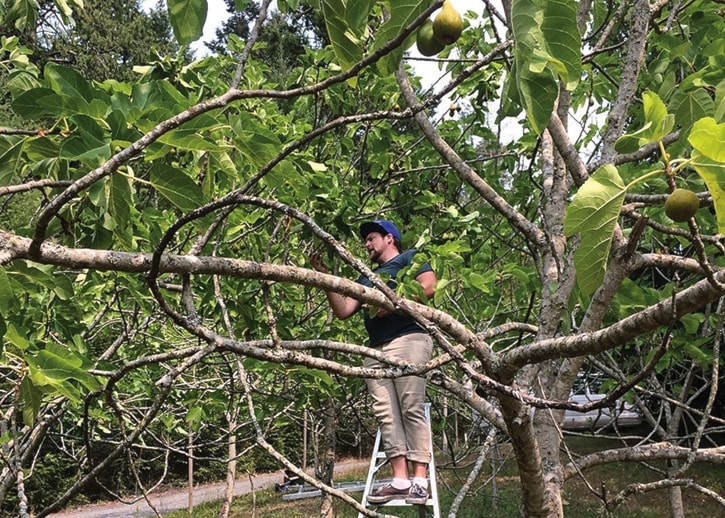An apple a day may keep the doctor away, but sometimes there are more apples on the tree than one person or family can eat. That’s where one community-based initiative comes into play, or pick, in this case.
The LifeCycles Fruit Tree Project, with the help of more than a hundred volunteers, harvests a variety of fruits from trees on private land where the owners may not have the time or resources to pick the fruit themselves. The goal is to save the fruit from spoiling on lawns. The harvest is divided between tree owners, volunteers, food banks and other community organizations, and with the project itself. A portion of fruit is set aside to make value-added products to help with costs.
The goal for this year: a whopping 40,000 pounds of fruit to be harvested and redistributed, up from the 32,000 pounds that was collected last year.
“The demand is always a little more than we can meet,” said Jenny McCartney, Fruit Tree Project co-ordinator. But each year the program grows and they can meet additional demand, she said, which means they always need more volunteers and more trees to sign up.
This year, volunteers are busier than usual at this time with fruit coming on earlier because of the heat. That puts the picking season about three weeks ahead of schedule, running until the end of October. Right now, McCartney said, it’s the middle of plum season and they haven’t seen too much drought damage. But she still urges residents to keep watering their trees, otherwise they’ll start dropping fruit before it’s ripe.
This lack of rotting fruit left on lawns has also helped with pest problems. McCartney said a number of residents have noticed a difference, especially with wasps.
While a large amount of fruit was picked in the View Royal area last season – it was actually one of the most productive areas – the rest of the West Shore is relatively uncharted territory. Organizers want to invite West Shore and Sooke residents to sign up their trees as they work on expanding the program, which also means supporting more services in those areas.
In the past, the high cost of gas has limited the program, McCartney said, but as the program expands they have been able to lump several picks into one day to make it more economical to expand further out into communities.
“All the on-the-ground work is done by volunteers,” she said. Unfortunately there are always trees they just can’t get to, which could result from the number of volunteers available at a given time or perhaps the timing of the seasons. Throughout the harvest season, the group has roughly 150 volunteers.
But the surge of volunteers is stronger at the beginning of the season than the end, McCartney notes.
When the fall weather hits and it starts to get darker earlier, it’s harder to get volunteers out.
“October can be tough, but also some of the biggest and best picks,” she said, adding that some volunteers really come through for them at that time.
Tree owners can still donate and are encouraged to pre-register their trees so picking can be co-ordinated. And of course, there is always room for more volunteer pickers.
If you’d like to know more about the Fruit Tree Project, go to lifecyclesproject.ca.
katie@goldstreamgazette.com
